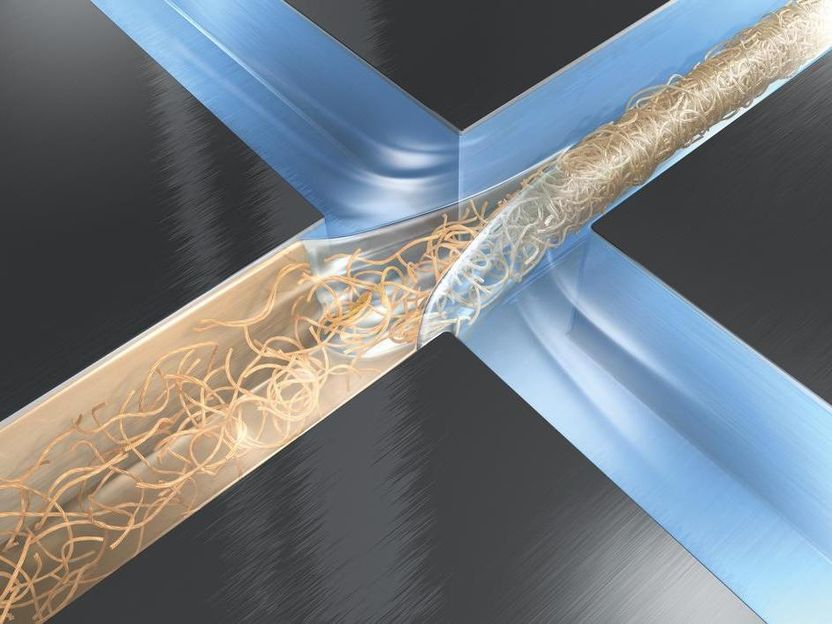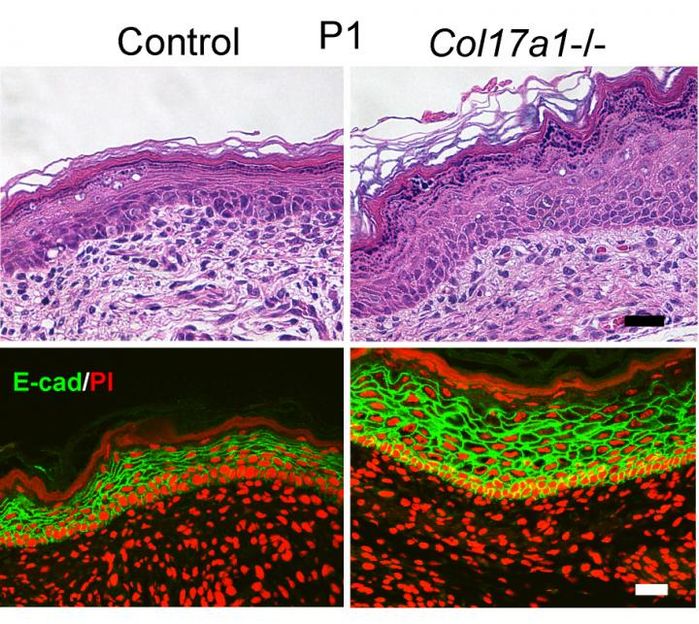A molecular switch to stop inflammation
Our immune system is vital to us and can sometimes overreact causing chronic illnesses, such as for instance rheumatism and allergy. Now, researchers from Umeå University and University of Gothenburg have identified a molecular switch - MYSM1 - that can suppress such an overreaction and avoid inflammation.
"The discovery of MYSM1 is a major milestone in our understanding of how our immune system works, and how its response could be controlled in order to prevent inflammatory diseases such as sepsis," says Nelson O. Gekara, research leader at MIMS, Molecular Infection Medicine Sweden at Umeå University.
Our innate immune system is activated when our body needs to protect itself against pathogens, for instance bacteria and viruses, as well as for tissue healing. In some people, the immune system overreacts which can cause chronic inflammatory diseases and result in tumour development. The innate immune system is activated by receptors that recognise certain molecular patterns found on microbes or dead cells. These receptors are called pattern-recognition receptors (PRRs).
"Most infectious or inflammatory situations are associated with the simultaneous or sequential activation of multiple PRR pathways. Therefore, it is essential to avert a disproportionate self-destructive immune response in a synchronised fashion once activated. How this is accomplished has been unclear," says Nelson O. Gekara.
Nelson O. Gekara's at Umeå University and his doctoral student Swarup Panda are now closing in on a solution. For years, they have been searching for possible genes required for the regulation of the immune system. Together with Professor Jonas A Nilsson at Sahlgrenska Cancer Center at the University of Gothenburg, the Umeå researchers have now identified MYSM1 - a molecule in the cell core (nucleus) of resting cells. For the first time, the researchers are now able to show that during infection or inflammation MYSM1 accumulates outside of the nucleus, in the cytoplasm where it disrupts the function of signalling molecules involved in activation of PRR pathways, thereby terminating inflammation.
"MYSM1 can be said to act like a molecular switch that can turn off several inflammatory pathways. Therefore lack of MYSM1 in animal results in unrestrained activation of the innate immune system, leading to inflammatory diseases" says Nelson O. Gekara.
His research team is now screening for small molecule compounds that are able to modulate the MYSM1 molecule activity. The hope is to find new therapeutics against infections and other inflammatory diseases.
Original publication
Swarupa Panda, Jonas A. Nilsson, and Nelson O. Gekara; "Deubiquitinase MYSM1 Regulates Innate Immunity through Inactivation of TRAF3 and TRAF6 Complexes"; Immunity; 2015
Original publication
Swarupa Panda, Jonas A. Nilsson, and Nelson O. Gekara; "Deubiquitinase MYSM1 Regulates Innate Immunity through Inactivation of TRAF3 and TRAF6 Complexes"; Immunity; 2015
Organizations
Other news from the department science

Get the life science industry in your inbox
By submitting this form you agree that LUMITOS AG will send you the newsletter(s) selected above by email. Your data will not be passed on to third parties. Your data will be stored and processed in accordance with our data protection regulations. LUMITOS may contact you by email for the purpose of advertising or market and opinion surveys. You can revoke your consent at any time without giving reasons to LUMITOS AG, Ernst-Augustin-Str. 2, 12489 Berlin, Germany or by e-mail at revoke@lumitos.com with effect for the future. In addition, each email contains a link to unsubscribe from the corresponding newsletter.
Most read news
More news from our other portals
Last viewed contents

Scientists spin artificial silk from whey protein - X-ray study throws light on key process for production
When Tooth Decay Becomes Fatal - Researchers to study role of oral streptococci in serious diseases
Category:Orthodontic_Technicians_Association
Advanced Cell Technology Announces Creation of Human Embryonic Stem Cell Lines Without the Destruction of Embryos - Breakthrough Approach Improves Efficiency to Levels Reported in the Conventional Stem Cell Derivation Techniques

Collagen controlling the thickness and juvenile state of skin
Journal_of_Bone_&_Joint_Surgery
Category:Marine_biologists

Ionic and covalent drug delivery
Bothriopsis
Evotec Completes Divesture of Chemical Development



















































